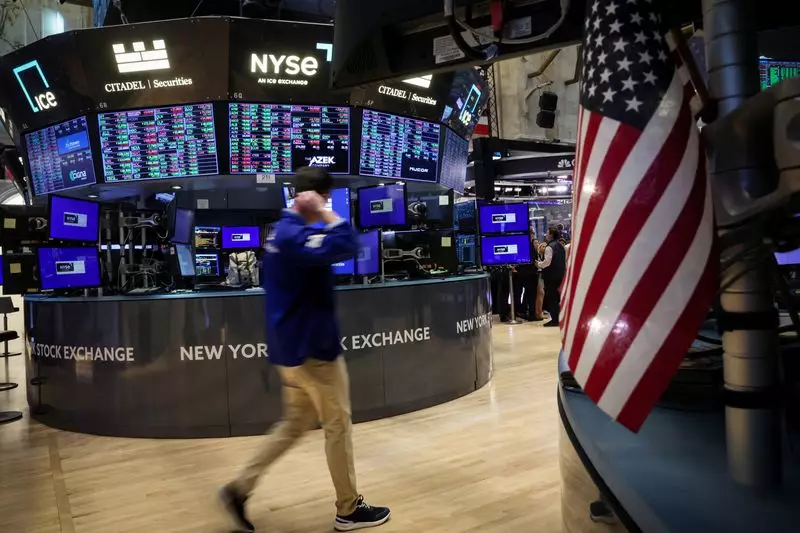On a vibrant Friday, the Dow Jones Industrial Average and the S&P 500 secured record closing highs, wrapping up another robust week of trading. The Nasdaq Composite also posted gains, contributing to a significant wave of optimism within financial marketplaces. The surge was predominantly spearheaded by Netflix, whose stock soared by 11.1% following exceptional earnings reports that exceeded analysts’ expectations for subscriber growth. This leading tech stock was not alone; it marked the performance of several tech companies collectively known as the “Magnificent Seven.” This cohort, essential to this year’s vigorous market rally, demonstrated significant increases, bolstering overall market sentiment.
Over the week, the S&P 500 climbed 0.9%, the Nasdaq Composite rose by 0.8%, and the Dow added 1%. The numbers paint a picture of solid performance, especially as all three benchmarks celebrated their longest streak of weekly gains since late 2023. The continuous rise in stock prices seems to reflect a stable macroeconomic backdrop characterized by disinflation and generally positive corporate earnings.
The tech sector has proven to be an indispensable pillar for the market’s upward trajectory. Noteworthy gains among key players solidified this trend. Apple shares increased by 1.2% after reports indicated a noteworthy uptick in new iPhone sales within China, an essential market for the tech giant. Similarly, chip manufacturer Nvidia saw a 0.8% rise in its stock price after Bank of America Global Research bolstered its price target, signaling strong investor confidence.
David Waddell, CEO of Waddell & Associates, remarked on the market’s positive outlook, highlighting a combination of encouraging economic data and solid corporate forecasts. With the S&P 500 closing at 5,864.67, and the Nasdaq at 18,489.55, investors are navigating through an optimistic landscape, though potential pitfalls linger on the horizon.
Despite the overarching positivity, the financial sector revealed its fragility on Friday. American Express shares fell by 3.1% as the company reported quarterly revenues that did not meet market expectations. While the overall earnings season for financial firms has been largely buoyant, the setback faced by American Express raised questions about the sustainability of sector performance. The S&P Banks index experienced a slight decline—0.1%—ending its winning streak at five sessions.
Concerns linger about valuation stretching, especially as the S&P 500 now trades at near 22 times forward earnings. The approaching U.S. presidential election on November 5, alongside uncertainties surrounding corporate earnings, could inject volatility into markets that seem poised for a possible correction, making investors weary.
Interestingly, small-cap stocks began attracting considerable attention as they outperformed larger indices this past week. The Russell 2000 and S&P Small Cap 600 showed promise, although both experienced slight declines on Friday. This trend indicates a shift in investor sentiment, suggesting a cautious but growing interest in smaller companies.
In contrast, the energy sector faced notable challenges, with a 0.4% drop attributed primarily to falling oil prices. High expectations for this sector were curtailed as SLB (formerly Schlumberger) undershot profit expectations, resulting in a substantial 4.7% decline in its shares. Other major players, including Baker Hughes and Halliburton, followed suit with downturns of 1.3% and 2.1%, respectively, reflecting how linked these companies are within the broader energy narrative, particularly amid concerns regarding Chinese demand.
The health care landscape encountered turbulence as CVS Health saw a 5.2% decrease in stock value, following the departure of CEO Karen Lynch and the withdrawal of its 2024 profit forecast. This news not only impacted CVS but also reverberated through the sector, influencing the stock performances of other health insurers like Cigna and Elevance Health, the latter plummeting to its lowest point in nearly 15 months.
While the current market climate is undeniably positive, underscored by record highs and a favorable economic environment, caution is warranted. Valuation concerns, political uncertainties, and sector-specific challenges present a complex landscape for investors. As corporate earnings continue to unfold, market participants will keenly watch for indications that could shift the current bullish sentiment into a more cautious outlook.

